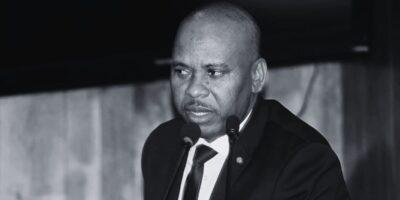Large cities plunged into darkness, while several studies reveal that Haiti has substantial renewable energy potential
With the exception of the capital Port-au-Prince, all the capital cities of the country’s 10 departments have been plunged into a blackout for at least 2 years, observes AyiboPost.
This absence of electricity makes Haiti stand out in the Caribbean as one of the few countries where this essential commodity of the modern world remains inaccessible to the majority of the population.
The capital does not enjoy constant or widespread access to electricity, an indication of the failure of public policies initiated across different administrations to democratize and sustain access to electricity.
According to a report published in 2021, more than half of the Haitian population had no access to electricity.
Four years earlier, the Inter-American Development Bank (IDB) estimated that the Haitian population accounted for 43% of those without access to electricity in Latin America.
Over half of the Haitian population did not have access to electricity, according to a report published in 2021.
The Electricity of Haiti (EDH), the state utility company responsible for the service, is in dire straits. It faces resource problems, significant technical difficulties, and corruption.
Several studies reveal that Haiti has substantial renewable energy potential.
But more than 80% of total electricity production continues to depend on imported fuel. EDH records a loss of around 60% during the transmission and distribution of energy.
Six years ago, the state-owned electricity company lost 23% of its revenue due to the inefficiency of its distribution system. Additionally, the vast majority of customers do not regularly pay for the service.
Former President Jovenel Moïse proposed generating electricity from renewable energy sources. In 2017, the administration of the late head of state removed taxes on solar panels and other green energy related equipment.
Read also : In June 2019 Haiti will not have 24/7 electricity as promised by the President
This policy, focused on the acquisition of equipment by private citizens, remains limited in a context where EDH continues to weigh heavily on public revenue.
More than 80% of total electricity production continues to depend on imported fuel. EDH records a loss of around 60% during the transmission and distribution of energy.
In 2018, the state subsidized the institution to the tune of $200 million. The electricity requirement for the whole country was estimated at 550 megawatts per day in 2019.
According to the National Renewable Energy Laboratory (NREL), the installed capacity is close to 400 megawatts. This lack in power is fueling a thriving market for generators and solar panels, according to findings by AyiboPost, local authorities and other citizens.
A few rare municipalities outside the metropolitan region have a system to provide electricity to their population. These are mainly private companies that sell their service in these areas, according to information collected by AyiboPost.
The Coteaux borough, in the South department, is supplied by the Electric Cooperative of the Coteaux Borough (CEAC), which uses a prepaid system to serve its customers.
Also, the municipalities of Roche-à-Bateau, Port-à-Piment and Coteaux currently receive five hours of power per day, produced by solar panels and generators, according to Fritznel Chery, the interim agent of Coteaux.
The commune of Cayes-Jacmel, in the South-East department, has a hydroelectric power station in Gaillard. This system cannot fully sustain the community, which benefits from four hours of power a day, the town mayor, Enante Barthélémy, tells Ayibopost.
The town is also connected to the EDH network, but for more than two years, it has not been supplied, underscores Barthélémy. Several municipalities in the Northeast department are supplied with electricity by a private American company. These are: Capotille, Mont-Organisé, Vallières, Carice, Terrier Rouge, Caracol, Trou-du-Nord, and Sainte-Suzanne.
The National Rural Electric Cooperative Association (NRECA) operates on a prepaid model and provides almost 24-hour power, according to Vilardouin Cersine, general manager of Explosion Info, a local media outlet.
The municipalities of Roche-à-Bateau, Port-à-Piment and Coteaux currently receive five hours of power per day, produced by solar panels and generators, Fritznel Chery, the interim agent of Coteaux, informs AyiboPost.
The National Energy Sector Regulatory Authority is working to encourage private initiatives in the production and distribution of electricity in the country. “EDH is a company that should be restructured,” Evenson Calixte, general director of ANARSE, told AyiboPost.
According to an ANARSE study, the most viable and economical way to electrify the country is to have “a mixed network composed of large networks and micro-networks,” specifies Calixte. “We must use a three-component strategy: strengthening the metropolitan network, modernizing regional networks by considering the option that they be managed by private operators, and implementing off-grid solutions, because it is more economical to have independent micro-grids to power small towns. »
South-East Department
Jacmel, capital of the South-East, is the first city to have electricity in Haiti and one of the first in the Caribbean.
However, “for about two years, the city of Jacmel has been plunged into total darkness,” Mayor Lourdie César tells AyiboPost.
The last two editions of the Jacmel carnival took place without power from the EDH, according to César.
Households in the area, with relatively high economic power, purchase a solar system or a generator, according to the town hall.
Jacmelians from the diaspora are joining forces to finance street lamp projects to light certain streets at night, highlights César.
EDH officials in the department cite a chronic fuel shortage as the real problem, says the mayor. But Jacmel’s power network is faulty, she says.
A study was initiated under Jovenel Moïse’s presidency to provide Jacmel with a solar energy system. Two months ago, technicians returned to diagnose the grounds where the project should be located, reveals Lourdie César to AyiboPost.
Municipal authorities are still awaiting the results of the study. The land requested from the town hall to carry out the project, which will be financed by the World Bank and the Inter-American Development Bank (IDB), is already available.
Center Department
The city of Hinche, administrative center of the Center department, has been without regular electrical power since 2020, the coordinator of MOJÈNLAN (a youth led organization), Péguy Étienne, reports to AyiboPost.
Under the leadership of this local organization, people from Hinche took to the streets on August 5 to demand electricity for the population.
“It is inconceivable that the Péligre hydroelectric power station be located in the Center department while this region keeps facing a continuous blackout,” points out Péguy Étienne.
Households in the town were lucky enough to see their light bulbs switched on for the patronal feast of the Immaculate Conception, only on December 6, 7 and 8, 2023, says Étienne.
“Following torrential rain and heavy winds on August 16, the step-up transformer supplying the lower plateau was damaged. The technicians cannot repair it,” informs an employee of the Péligre catchment.
This problem is partially resolved for the Bas-Plateau, according to two residents of this area and an EDH official. Although the supply of electricity has resumed, it remains intermittent and without a fixed schedule.
According to this technician, who requests anonymity because he is not authorized to speak to the press, steps are being taken to replace the equipment, but this could take a relatively long time.
It is inconceivable that the Péligre hydroelectric plant be located in the Center department while this region continues to face a continuous blackout.
– Péguy Étienne
Department of Grand’Anse
Gelin Jean, who lives in Jérémie, in Caracolie, in the Duverger area, reports that the “city of poets” has not been supplied with electricity for around three years.
“Those who have the means manage to power their homes,” says Jean.
Nippes Department
Due to a lack in resources to power the system, the Miragoâne power plant has not been operational since the assassination of former president Jovenel Moïse, said the town’s mayor, Markens Joseph. This situation has persisted for more than two years in the metropolis of Nippes, he adds.
The Miragoâne electrical system is defective, indicates the magistrate. Power poles damaged by accidents need to be replaced. The network, in general, has been affected during periods of political unrest.
“Around three million gourdes are needed for maintenance and repair of the system to solve the electricity problem in the city,” says Joseph.
The mayor of Miragoâne pleads for the autonomy of municipalities in terms of resources in order to ensure the self-functioning of electrical systems without direct intervention from the central State.
North-East Department
According to the mayor of the Northeast metropolis, Louis Jacques Étienne Junior, the city of Fort-Liberté has been facing a blackout since 2021.
The Fort-Liberté power plant, which is equipped with seven generators, including four brand new ones, should supply the city as well as the communities of Ferrier and Ouanaminthe, according to Louis Jacques.
“We don’t have fuel to run the plant. This is our only problem,” specifies the mayor of Fort-Liberté.
North West Department
The electricity problem in the city of Port-de-Paix dates back to 2021. For the Football World Cup in 2022, EDH supplied the city throughout the course of a few matches, reveals journalist Wilgens Devilas to AyiboPost.
The power plant that supplies the region has been dysfunctional for two years. Although this power station has four new generators, the electricity problem persists in Port-de-Paix.
At the end of August, the room where the electrical system devices are housed sustained some damage. Officials have not yet communicated the results of this incident, says Devilas.
Northern Department
Cap-Haïtien, the country’s second city, is not exempt from this scourge of blackouts. Three residents of the North department confirmed to AyiboPost that electricity has been unavailable for at least two years.
Widespread insecurity in the country, involving the obstruction of national roads by armed gangs, is also preventing some EDH departmental offices from providing their services to the population.
Department of Artibonite
The mayor of Gonaïves, Donald Diogène, cites the insecurity situation as an obstacle to fuel rationing for the city’s electrical system.
“The last time we were able to stock up on fuel, at the end of December 2023, the journey through Saint-Michel was very difficult. It took 12 hours. The suppliers declared that they would not return in these conditions,” says Diogenes.
Moreover, the Gonaïves power plant, which has eight generators, needs maintenance. Only four of these devices can produce electricity at 50% of their capacity, but they are all repairable, confirms the city’s first citizen.
In Gonaïves, the fourth city in the country, the power issue is not new, underscores Diogenes. According to him, Gonaïves has often been relegated to the background on government agendas. “Gonaïves has suffered from this electricity problem for almost eight years. I have been at the head of the town hall for about four years, and the situation existed well before,” explains Donald Diogene.
South Department
The third city in the country, Les Cayes, has not been supplied with power for more than two years, informs Séné Charles Michaud, installed for nine months at the head of the semi-autonomous center of Les Cayes.
According to the manager, the plant located in Bourdet is no longer operating because of the security situation in the country and the debts accumulated by customers.
“Fuel intended to supply the power plant is sometimes seized by bandits. The latter demand a significant sum of money to let the trucks pass,” reveals director Michaud to AyiboPost.
Payment of debts accumulated in the South department could help with the local supply of fuel to produce electricity without waiting for central management in Port-au-Prince, according to Michaud.
“Customer debts amount to approximately 72 million gourdes, just for the city of Les Cayes,” informs Michaud.
The power system in this region consists of seven generators. Only three are operational, requiring an average of 250 gallons of fuel per hour, says the director.
“Fuel intended to supply the power plant is sometimes seized by bandits. The latter demand a significant sum of money to let the trucks pass,” reveals director Michaud to AyiboPost.
The other generators have been broken down for more than two years, adds the mayor. Working engines can produce 3.4 megawatts, which is largely insufficient to power the city as a whole.
The town of Camp-Perrin has a hydroelectric power station. It was damaged by the earthquake of August 14, 2021, which severely affected the Southern Peninsula.
“Repairs have been carried out at the building level, but the materials necessary to put the system back in operation are slow to arrive because of the insecurity on national road number two,” reveals Séné Charles.
Jabin Pontus participated in this report.
Cover image: | Children use a paraffin lamp to study during a blackout in Soweto © Siphiwe Sibeko/Reuters.
► AyiboPost is dedicated to providing accurate information. If you notice any mistake or error, please inform us at the following address : hey@ayibopost.com
Keep in touch with AyiboPost via:
► Our channel Telegram: click here
► Our Channel WhatsApp: click here
► Our Community WhatsApp: click here







Comments